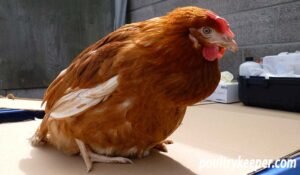Respiratory Syndromes in Poultry: Pathogens, Prevention, and Control Measures

Dr. Majid Hamid Al-Sayegh
17/7/ 2025
Abstract
Respiratory syndromes (RS) in poultry include diseases that cause respiratory dysfunction, leading to significant economic losses. They are caused by infectious agents (viruses, bacteria, fungi, chlamydia) and non-infectious factors (poor environment, management errors). RSs are rapidly spreading, with high morbidity and frequent co-infection. Challenges include the ineffectiveness of vaccines against various strains and antibiotic resistance due to their overuse. This article reviews common pathogens (e.g., infectious bronchitis virus (IBV), avian influenza virus (AIV), Newcastle disease virus (NDV), infectious laryngotracheitis virus (ILTV), avian pathogenic Escherichia coli (APEC), and Mycoplasma gallisepticum), contributing environmental factors (e.g., fine particulate matter, ammonia), and management errors (overcrowding, poor hygiene). It also evaluates modern diagnostic methods (such as multiplex polymerase chain reaction (PCR), vaccines (live attenuated, recombinant), drug strategies (antivirals, antibiotics, immunomodulators), alternatives to antibiotics (herbs, probiotics), and biosecurity measures. The goal is to enhance understanding and implementation of effective prevention and control of respiratory syndromes.

- Introduction
Respiratory syndromes (RS) cause high mortality rates and economic damage in poultry, especially in intensive farming systems. They are characterized by unclear etiology and mixed infections, and weaken the respiratory mucosal immune barrier. Symptoms include coughing, sneezing, dyspnea, nasal discharge, and decreased egg production. Necropsy findings often show tracheal hemorrhages, air sacculitis, and pulmonary necrosis. Management of RS is complicated by the diversity of pathogens, environmental stressors, and the ineffectiveness of vaccines in providing cross-protection. This review synthesizes current knowledge on the causes, diagnosis, and interventions of RS to guide improved disease control.
- Epidemiology and Coinfection:
Outbreaks of respiratory syndromes involve synergistic interactions between pathogens:
- Viral-bacterial coinfection: H9N2 avian influenza virus increases inflammatory cytokines (e.g., IFN-γ, IL-17A) while damaging mucosal barriers, facilitating secondary infection with Escherichia coli.
- Viral-viral interactions: Co-infection with IBV and NDV increases the severity of respiratory lesions.
- Global distribution: Studies in Egypt, Ethiopia, India, and Brazil confirm high rates of coinfection (e.g., IBV + NDV + Mycoplasma).
- Key conclusion: More than 80% of flocks with respiratory symptoms carry two or more pathogens, which increases disease severity.
- Infectious Pathogens
3.1 Viruses
Pathogen Main Characteristics Clinical Impact
1. Infectious Bronchitis Virus (IBV) Coronavirus; S protein variation drives strains (e.g., Mass, QX). Destroys the epithelium of the trachea. Causes bronchitis, kidney injury, and permanent oviduct damage in laying hens.
- Avian Influenza Virus (AIV) Highly pathogenic (e.g., H5N1) and low-pathogenic (e.g., H9N2) strains; antigenic divergence in HA/NA. Transmissibility to humans. High mortality (highly pathogenic type); respiratory distress, systemic hemorrhage.
- Newcastle Virus (NDV) Paramyxovirus; dominant genotype VII. Surface F/Hn proteins are crucial. Neurological symptoms (e.g., neck twisting), visceral hemorrhage, and respiratory distress.
- Infectious Laryngotracheitis Virus (ILTV) Herpesvirus; glycoproteins (e.g., gB, gD) enable it to evade immune response. Latency in hosts. Fibrous necrotizing tracheitis, conjunctivitis, decreased egg production.
- Avian Metapneumovirus (aMPV) types A–D; F/G proteins facilitate fusion and adhesion. Swollen head syndrome, rhinotracheitis in turkeys, airsacculitis.
3.2 Bacteria and other agents
- Avian pathogenic Escherichia coli (APEC): serotypes O1, O78; virulence factors (e.g., hemolysin, LPS). Causes severe sepsis, pericarditis, and arthritis.
- Avian paragallinarum: serotypes A–C; capsular polysaccharide facilitates colonization. Causes infectious coryza (facial swelling, sinusitis).
- Mycoplasma gallisepticum: lacks a cell wall; lipid-associated membrane proteins (LAMPs) activate TLRs. Causes chronic respiratory disease, exacerbated by stress.
- Chlamydia psittaci: Intracellular; genotypes B–D in poultry. Asymptomatic carriers; causes respiratory/intestinal disease under stress.
- Non-communicable Factors
4.1 Environmental Stressors:
- Fine Particulate Matter (PM): Particles <20 micrometers settle in the lungs, causing inflammation.
- Ammonia (NH₃): Levels >25 ppm damage the bronchial mucosa, disrupting the microbiome.
- Poor Ventilation: Increases carbon dioxide, reduces oxygen, and concentrates pathogens.
- Temperature/Humidity: High temperatures increase respiratory rate; low humidity dries out mucosal barriers.
4.2 Management Errors:
- Overcrowding: Increases the risk of transmission and stress-induced immunosuppression.
- Poor Hygiene: Contaminated water/equipment spreads pathogens (e.g., Salmonella, APEC).
- Prevention and Control
5.1 Diagnosis:
- Multiplex PCR/Liquid Nanoarrays: Detects 9–15 pathogens simultaneously (e.g., AIV + NDV + Mycoplasma).
- Serological testing and virus isolation: Remains the gold standard but is slow (7–14 days).
5.2 Vaccines
Type Advantages Limitations
1. Live attenuated vaccines induce strong mucosal immunity (e.g., ILTV vaccine from embryonated chickens). Risk of re-virulence, genetic recombination.
2. Recombinant vaccines are safe and targeted (e.g., ILTV vaccine using HKT as a vector). Limited cross-protection.
3. Inactivated vaccines are stable; no risk of replication. Require adjuvants/booster doses; weak cellular immunity.
5.3 Drug Treatment
- Antivirals: Limited use (e.g., oseltamivir for AIV; ribavirin is prohibited).
- Antibiotics: Florfenicol/Danofloxacin for APEC; close monitoring for drug resistance is essential.
- Immunomodulators: Vitamins (A, E, C), selenium, beta-glucans to enhance immunity.
5.4 Antibiotic Alternatives
- Herbal Medicines: Astragalus (against IBV), Sofoflavanone G (against NDV).
- Probiotics/Phytocompounds: Improve the gut-respiratory immune axis.
- Spirulina: Promotes growth and disease resistance.
5.5 Biosecurity
- Farm Isolation: Distance from highways and residential areas.
- Sanitation: Daily disinfection, carcass disposal, pest control.
- Geographic Information Systems (GIS): Track outbreak patterns for targeted interventions.
- Conclusions
1. Controlling respiratory syndromes requires integrated strategies:
2. Pathogen surveillance: molecular screening for emerging strains.
3. Vaccine improvement: tailored to regional strains (e.g., QX vaccines for IBV in Asia). - Environmental management: improved ventilation, ammonia control, reduced bird density.
5. Rational use of medicines: reducing antibiotics; prioritizing immunomodulators and herbal alternatives.
6. Global collaboration: sharing data on outbreaks and vaccine efficacy.
7. Future directions: global vaccines targeting conserved viral epitopes, phage therapy for bacterial control, artificial intelligence-based farm monitoring systems.



